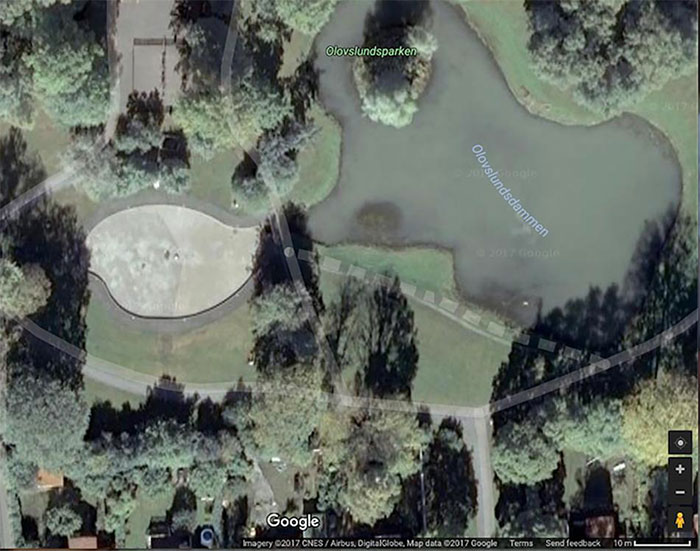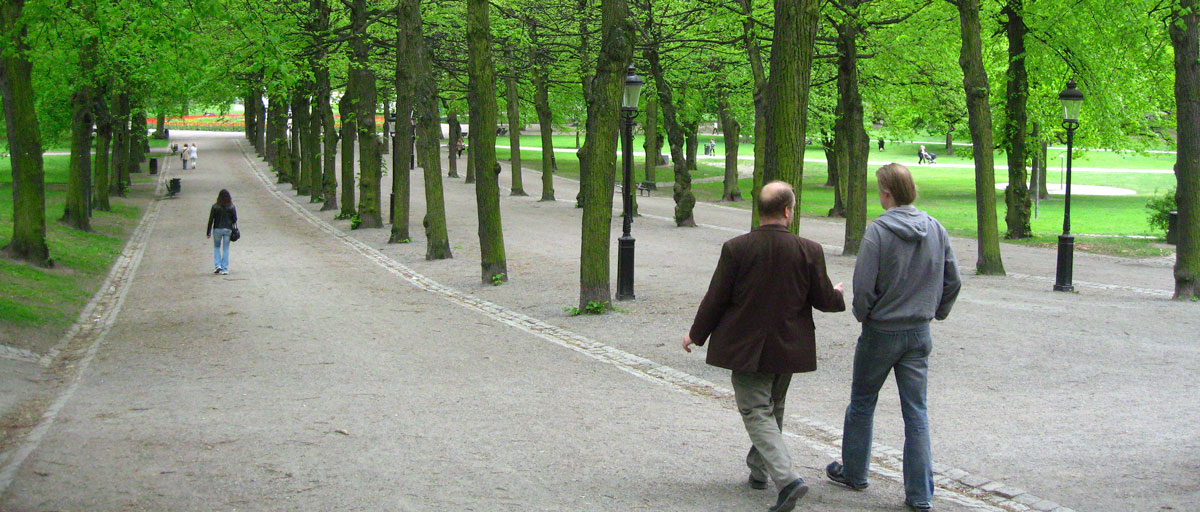
A study into a school project saving salamanders from a concrete pool outside Stockholm shows that the children develop a stronger and more meaningful connection with nature afterwards. Involving young children in authentic nature stewardship actions as an activity at school may be a promising way to counteract any weakening connection to nature, the researchers argue. Photo: S. Belton
Bildtext får vara max två rader text. Hela texten ska högerjusteras om den bara ska innehålla fotobyline! Photo: B. Christensen/Azote
CHILDREN AND NATURE
Love nature, save a salamander
Swedish school project shows how children saving salamanders grow a stronger connection to nature afterwards
- A study into a school project saving salamanders outside Stockholm shows that the project boosts the children's meaningful connection with nature
- This connection remains years after the children take part in the project
- The researchers found that the children highly valued being given the opportunity to participate or be included in an important real-world project. This could be a promising way to counteract any weakening connection to nature
In a park in Bromma, a quiet suburb outside of Stockholm, a pond offers one of the Swedish capital’s most important breeding grounds for two species of salamander found in Sweden. The pond, being shallow, relatively warm and free from aquatic predators, provides an ideal habitat for these amphibians to reproduce. But the salamanders are unable to escape the high walls of an empty concrete wading pool which is en route to their preferred breeding ground. A slow and painful death from drying out awaits the most unlucky ones.
So what to do?
Enter a group of dedicated fourth grade school children from Olovslund School nearby.
Every year since 2008, children from the school participate in an initiative trying to save salamanders from falling into the concrete pool. During the breeding season, which takes place between April and May, a small group of children spend their lunch breaks carefully searching through piles of leaves scattered around the pool hoping to find salamanders who have lost their ways. Any salamanders found is put in a bucket of water. Before releasing them into the nearby pond, the children document the number, species and sex of the salamanders found.
Over the ten years the project has been running almost 5000 salamanders have been saved.

Olovslund Park with the pond on the right and the paddling pool to its left. The school is just a short walk away (source: Google Maps).
Less scared, more confident in nature
The project has attracted the attention of researchers from Sweden who are curious to see if the activity has any deeper implications on children’s’ relation with nature. A study into it has recently been published in the journal Frontiers in Psychology and is co-written by centre researchers Stephan Barthel and Matteo Giusti together with colleagues from University of Gävle and the Swedish University of Agricultural Sciences. Sophie Belton, a Master's student from the Stockholm Resilience Centre, was also a co-author of the study.
Link to publication
Request publication
Based on interviews and observations of the children while helping the salamanders the researchers found that the project helps create a more meaningful connection with nature which remains years after the children take part in the project.
Barthel and his colleagues conducted the interviews and the observations in 2015 but followed up in 2017 with the same children. The researchers found strong indications that the children not only developed sympathy for salamanders but also increased their concern and care for nature.
That remained as the children grew older. “Well, it’s like I’m less scared and feel more…confident in nature,” one child said.
“It’s fun to feel that you have actually done something important. Something that is actually good for the environment, something that makes a difference,” said another.
Improving education programmes
Their study, Barthel argues, has implications for the design of education programmes that aim to connect children with nature. As the children crawl, walk and run around and explore the features of the environment around them, they overcome different challenges, build environmental sensitivity and personal competence.
The researchers found that the children highly valued being given the opportunity to participate or be included in an important real-world project. This was confirmed by the teacher in charge who reported that the children appreciated connecting with living organisms during authentic situations.
Our rich qualitative data suggest that situations triggering free exploration of the area, direct contact and significant experience of interacting with a species where important for children’s affective relationship with the salamanders and with nature
Stephan Barthel, lead author
More authenticity, please
Barthel and his colleagues are aware about the dangers of adding too much weight behind a 10-year old child’s thoughts on an experience, but believe this is mitiaged by combining interviews with observations and following up with the children two years after they were originally approached. In fact, Barthel explains, the children expressed themselves in a considerably more concise way in 2017 compared to earlier.
In terms of practical policy advice, Barthel and his colleagues believe their study shows that involving young children in authentic nature stewardship actions as an activity at school may be a promising way to counteract any weakening connection to nature.
“Obligatory stewardship projects during school hours can be implemented more broadly in society compared to projects that are voluntary after school,” they conclude.
Methodology
The qualitative method includes two waves of data collection: when a group of 10-year-old children participated in the project (2015) and 2 years after they participated (2017). The researchers conducted 49 interviews with children as well as using participant observations and questionnaires.
Contact with the school had been established prior to this study in the form of a pilot study in 2014. Alongside consent from the school principal and concerned teachers, full written parental consent was obtained for all participating students. Furthermore, the research design was approved in an ethical review process conducted by a Swedish university.
Link to publication
Request publication
Barthel, S. Belton, S., Raymond, C., Giusti, M. 2018. Fostering Children’s Connection to Nature Through Authentic Situations: The Case of Saving Salamanders at School, Front. Psychol., 08 June 2018 | https://doi.org/10.3389/fpsyg.2018.00928
Stephan Barthel studies environmental issues in metropolitan landscapes. He has been part of developing the discourse on urban social-ecological systems and ses methods and theories form the natural and the social sciences, as well as from the humanities.
Matteo Giusti researches the relationship between sustainable ecological and psychological systems. His PhD in Sustainability Science addresses a design of urban nature that not only focuses on functional or technological sustainability, but also motivates the cognitive and emotional foundation of biosphere stewardship.a









